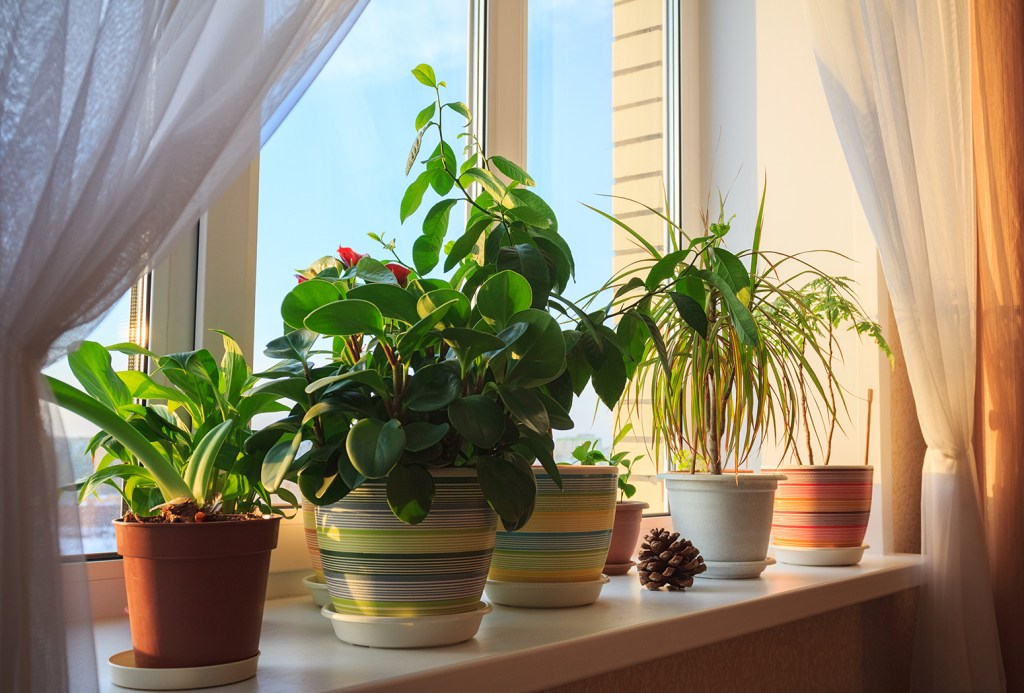ONE GARDENER TO ANOTHER: Houseplant care in fall and winter
Published 6:45 am Monday, October 21, 2019

- Houseplants, once brought indoors for the winter, will require less water.
Many gardeners take their houseplants outdoors during the milder temperatures of spring and summer. With temperatures dropping at night, it’s time to bring in plants that would otherwise be damaged if they were exposed to frost.
Last year, I learned pretty quickly that croton plants, although they enjoyed being outside and grew very well during the summer, did not like being moved indoors. Not that the croton minded my home; it just doesn’t like to be moved. To make its point, it dropped every single one of its leaves. They grew back, but I learned to leave this particular fellow in its place.
The croton was kept company by a pothos plant. Pothos can live outdoors, however, they aren’t particularly fond of a lot of light, preferring to be well out of direct sunlight. Being that I only have a few coveted spots with low light that are filled with great big bushy ferns, and the fact that the pothos is quite large and heavy, it stayed put too.
However, I do have a gang of traveling plants that vacation outside for a few months every year before coming back for winter break here in the house. Moving them indoors is not as simple as just picking them up and carrying them in. Like most of us after a good trip away, they need to be eased back into the indoors and sometimes need to be checked for bugs.
Since the environment indoors is different than outdoors, it should be done in stages. Plants that have been exposed to a lot of sunlight outdoors should be moved to areas with decreasing amounts of light over the course of three to five days before being moved inside.
I think the biggest dilemma is finding window space for everyone. I only have limited high light, southern exposure areas for plants. This is where a little planning goes a long way.
I know what you’re thinking — I moved them out, so I know where they will go inside. Many times, gardeners will add to their brood during the summer, transferring plants straight from the nursery into areas outside. If all the new plants require the same light exposure, there might not be space for all the new additions. Plus, being that plants grow, some may take up more room than they used to.
That’s not such a bad thing, actually. Grouping plants together helps raise humidity for the plant, keeping them healthier in dry conditions caused by central heating systems. Humidity can also be sustained by placing plants on a tray of rocks or moist sand, but pots should not sit directly in water.
A good solution that will keep plants close and provide ample space is to go vertical. Tiered shelving can be situated in front of a sunny window and filled with more than you could get on a single surface.
As I mentioned earlier, plants should be checked for pests before they are moved indoors. Inspect the top and underside of leaves as well as the soil and inside any leaves that haven’t unfurled yet. Give the plant a strong spray of water and apply an insecticidal soap to destroy pests and their eggs.
Houseplants, once brought indoors for the winter, will require less water. Although it would seem to make sense that a dryer climate would warrant more water, that isn’t the case. Plants experience a slower rate of growth and the water they do take in will not dry up as quickly as when they were in higher temperatures.
The rule of thumb — or finger, in this case — is to water only when you stick a finger in the soil and the top inch or so is dry. Thoroughly saturate the soil so that it runs out of the drainage holes in the bottom of the pot. Empty any excess water from the catch tray so that it does not stand in water. Keep leaves clean of dust and grease by gently wiping with a clean cloth or sponge.
Winters won’t seem so dismal when surrounded by healthy green plants. Until next week, happy gardening.
— Irland, a member of the Limestone County Master Gardeners, can be reached at kippirland@hotmail.com. For more information on the Limestone County Master Gardeners, visit http://mg.aces.edu/limestone.





